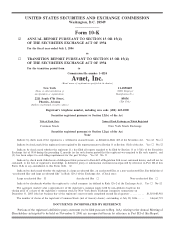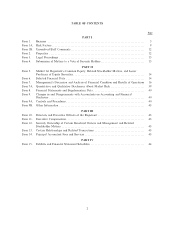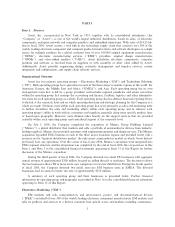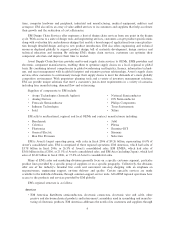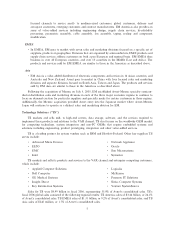Avnet 2006 Annual Report Download - page 17
Download and view the complete annual report
Please find page 17 of the 2006 Avnet annual report below. You can navigate through the pages in the report by either clicking on the pages listed below, or by using the keyword search tool below to find specific information within the annual report.Substantial defaults by the Company's customers on its accounts receivable or the loss of significant
customers could have a significant negative impact on the Company's business, results of operations,
financial condition or liquidity.
A significant portion of the Company's working capital consists of accounts receivable from customers. If
customers responsible for a significant amount of accounts receivable were to become insolvent or otherwise
unable to pay for products and services, or were to become unwilling or unable to make payments in a timely
manner, the Company's business, results of operations, financial condition or liquidity could be adversely
affected. An economic or industry downturn could adversely and materially affect the servicing of these
accounts receivable, which could result in longer payment cycles, increased collection costs and defaults in
excess of management's expectations. A significant deterioration in the Company's ability to collect on
accounts receivable could also impact the cost or availability of financing under its Securitization Program.
The electronics component and computer industries are highly competitive and if the Company cannot
effectively compete, its revenues may decline.
The market for the Company's products and services is very competitive and subject to rapid
technological advances. Not only does the Company compete with other global distributors, it also competes
for customers with regional distributors and some of the Company's own suppliers. The Company's failure to
maintain and enhance its competitive position could adversely affect its business and prospects. Furthermore,
the Company's efforts to compete in the marketplace could cause deterioration of gross profit margins and,
thus, overall profitability.
The sizes of the Company's competitors vary across market sectors, as do the resources the Company has
allocated to the sectors in which it does business. Therefore, some of the competitors may have greater
financial, personnel, capacity and other resources or a more extensive customer base than the Company has in
one or more of its market sectors.
The Company's non-U.S. locations represent a significant and growing portion of its revenue, and
consequently, the Company are increasingly exposed to risks associated with operating internationally.
During fiscal year 2006, 2005 and 2004, approximately 49%, 48% and 47%, respectively, of the
Company's sales came from its operations outside the United States. Most notable in this growth of
non-U.S. sales is the increasing volume of sales activity in the Asia region, which accounted for approximately
18% of consolidated sales during fiscal year 2006. As a result of the Company's foreign sales and locations, its
operations are subject to a variety of risks that are specific to international operations, including, but not
limited to, the following:
‚ potential restrictions on the Company's ability to repatriate funds from its foreign subsidiaries;
‚ foreign currency fluctuations and the impact on the Company's reported results of operations of the
translation of the foreign currencies to U.S. dollars;
‚ import and export duties and value added taxes;
‚ import and export regulation changes;
‚ changing foreign tax laws and regulations;
‚ political instability, terrorism and potential military conflicts;
‚ inflexible employee contracts in the event of business downturns; and
‚ the burden and cost of compliance with foreign laws.
The Company has operations in several locations in emerging or developing economies that have a
potential for higher risk. The risks associated with these economies include currency volatility and other
economic or political risks. While the Company has and will continue to adopt measures to reduce the impact
of losses resulting from volatile currencies and other risks of doing business abroad, the Company cannot be
ensured that such measures will be adequate.
11


